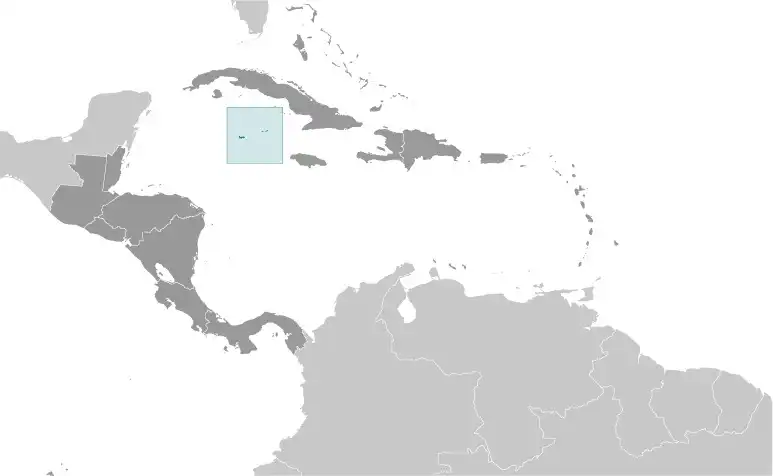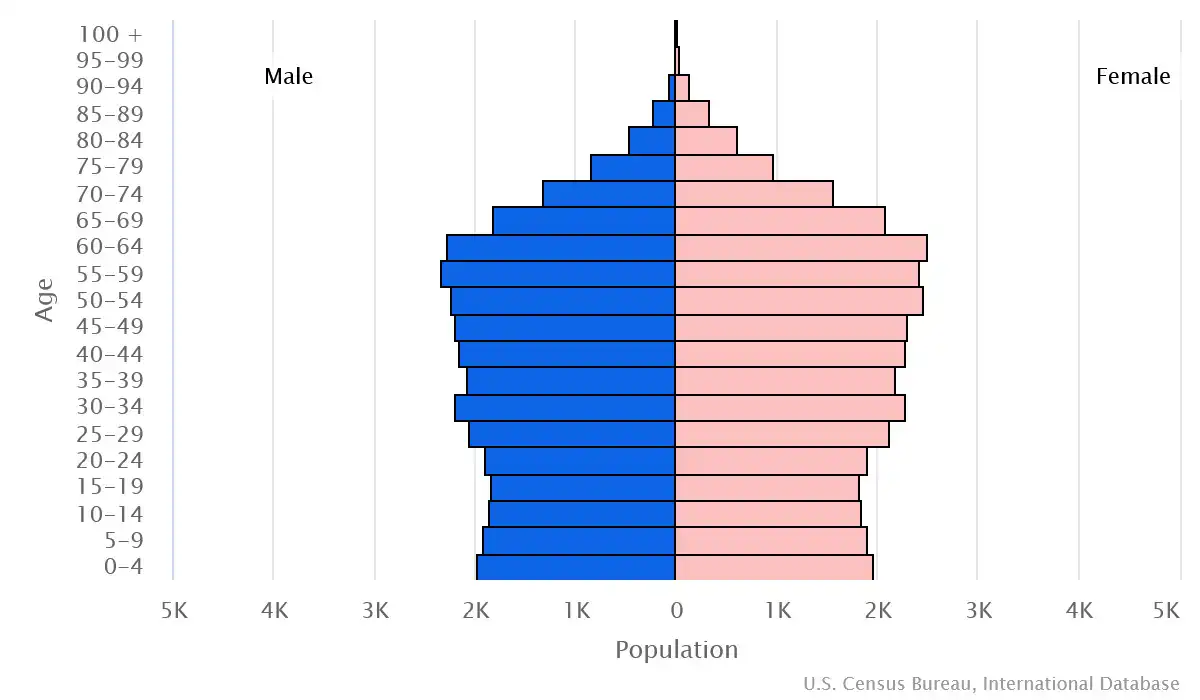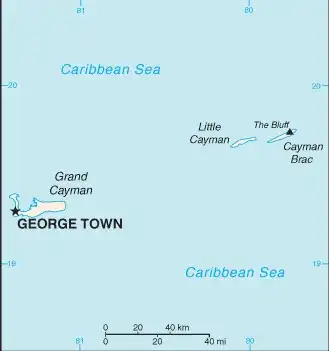
Cayman Islands
Veröffentlicht: 18. June 2022 - Letztes Update: 28. February 2025
Country Data Dashboard

Population
66,653
Growth: 1.75% (2024 est.)
GDP
$7.139 billion
(2023 est.)
Area
264 sq km
| Government type: | parliamentary democracy; self-governing overseas territory of the UK |
| Capital: | George Town (on Grand Cayman) |
| Languages: | English (official) 88.8%, Spanish 3.9%, Filipino 3.8%, other 2.8%, unspecified 0.7% (2021 est.) |
People & Society
Ethnicity (2021 est.)
Religion (2021 est.)
Age structure

Economy
Economic overview
dominant offshore banking territory; services sector accounts for over 85% of economic activity; recently adopted a fiscal responsibility framework to combat tax evasion and money laundering; large tourism sector; does not have any welfare system; high standard of living
Real GDP (purchasing power parity) in Billion $
Real GDP per capita in $
Exports & Imports in billion $
Top 5 Import Partner in 2022 (83%)
Top 5 Import Commodities in 2022
- ships 🚢
- refined petroleum ⛽
- diamonds 💎
- cars 🚗
- gold 💰
Top 5 Export Partner in 2022 (83%)
Top 5 Export Commodities in 2022
- ships 🚢
- aircraft ✈️
- refined petroleum ⛽
- natural gas 💨
- broadcasting equipment 📡
Geography
Map

Area
Natural resources
- fish 🐟
- climate and beaches that foster tourism
Climate
tropical marine; warm, rainy summers (May to October) and cool, relatively dry winters (November to April)
Historical Background Information
The British colonized the Cayman Islands during the 18th and 19th centuries, and Jamaica -- also a British colony at the time -- administered the islands after 1863. In 1959, the islands became a territory within the Federation of the West Indies. When the Federation dissolved in 1962, the Cayman Islands chose to remain a British dependency. The territory has transformed itself into a significant offshore financial center.
